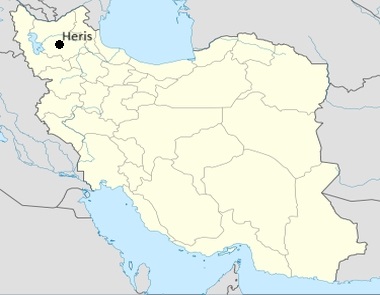Origin and history of the Heriz carpet
Heriz carpet is a special type of Persian carpet made in the Heris region of northwest Iran. This area is famous for its rich history and traditional craftsmanship. Heriz carpets have roots going back centuries and are considered one of the most famous branches of Persian carpet making. The carpets are typically made by local families who pass on the knotting techniques from generation to generation. The special geographical characteristics of the Heris region also contribute to the uniqueness of these exclusive carpets. The copper-rich water sources in the area play an important role in the durability of the materials. The wool, cotton and silk fibres from which the carpets are made are extremely resistant and do not lose their quality over the years. The popularity of Heriz rugs began to grow in the 1800s, especially in Europe and North America, when demand for antique Persian rugs increased. Since then they have been a favourite choice of collectors and decorators, offering the perfect combination of elegance and durability. Especially this exclusive Heriz carpet which includes silk fibres.

Heriz Persian carpets feature distinctive patterns and colours
One of the best known features of Heriz rugs is their distinctive geometric patterns. These carpets are mainly made with a central Medallion pattern, around which intricate angular motifs are built. The Medalion is usually composed of large symmetrical shapes, creating a balance that runs throughout the carpet. The patterns often include floral motifs, leaf shapes and animals, reflecting the cultural and natural environment of the region. In terms of colour, Heriz carpets are renowned for their use of deep and rich hues. The dominant colours include beige, brown and golden yellow. These colours are traditionally produced using natural vegetable dyes, which gives the rugs a special patina and durability. The use of contrasting colours brings out the detail in the designs, creating a unique visual experience.
The Heriz rug hand knotting technique
The outstanding quality and durability of Heriz rugs is largely due to the fine hand knotting technique. The exclusivity of the carpet lies in the fine hand knotting of wool and silk fibres. In the process, the cotton yarns that form the basis of the rug are carefully interwoven and then each knot of wool and silk is hand knotted. The knotting technique is called "symmetrical knotting" or also known as "Turkish knotting". The knot count of this carpet is very high (550,000-650,000 knots per square metre), which makes it a real speciality among Heriz carpets.
How to care and clean Heriz carpets?
Heriz carpets are renowned for their durability, but without proper care, these beautiful pieces can lose their luster and longevity. One of the most important aspects is regular carpet maintenance and cleaning. Although these rugs are made from high quality wool, which is naturally resistant to dirt and stains, some basic cleaning rules must be followed. The first and most important step is regular vacuuming, which prevents dust and dirt from getting into the deeper layers of the carpet. It is important to vacuum gently and in the direction of the fibres so as not to damage the fibres of the carpet or the hand knotting. Also, if the carpet is in a high-traffic area, it is a good idea to rotate it occasionally to ensure even wear. When removing stains, it is advisable to act immediately, especially if liquid is spilt on the carpet. The best method is to gently soak the stain with a soft, absorbent material without rubbing, as this can make the situation worse. If more serious cleaning is required, it is advisable to consult a professional, as hand-knotted carpets require special treatment. Finally, caring for Heriz carpets involves regular professional cleaning, which is usually recommended every 5-10 years. Experts are familiar with the characteristics of hand-knotted Persian rugs and use appropriate techniques to deep clean them without damaging their colour and texture.

